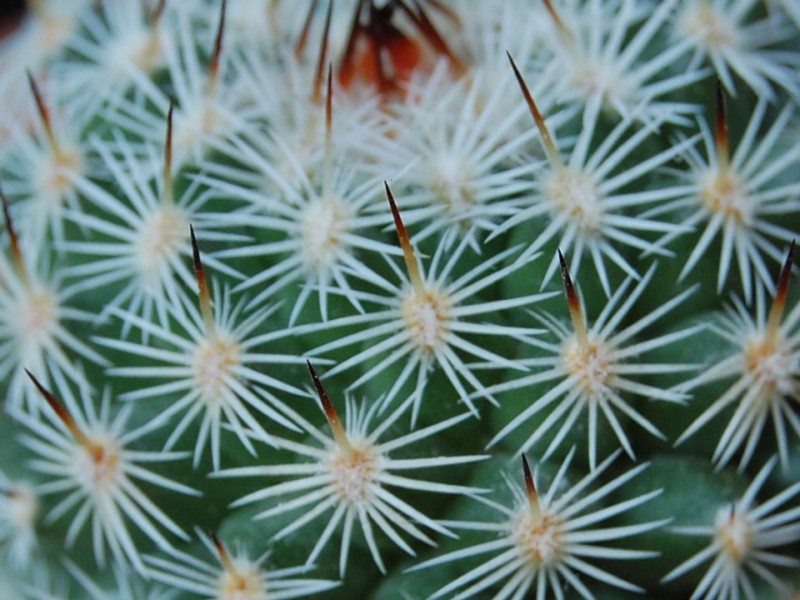There are two different plants in my collection, but with the same label....
The first from Uhlig-Kakteen.
Mammillaria dealbata - N.1



Could it be near this description?
Description from "Mundo de las Cactaceas" Helia Bravo Hollis:
Mammillaria dealbata Dietrich, Allg. Gartenz. 14:309.1846 (non sensu Britton et Rose).
Cactus dealbatus Kuentze, Rev. Gen. PI. 1:260,1891.
Tallo robusto, cilindrico.
Tuberculos fuertemente subcomprimidos, obliquamente truncados, verde-grisaceus. Axilas subnudas, Areolas blancas, tomentosas, despuedes desnudas. Espinas radiales 24 a 26, muy tenues, suberecto-radiantes, niveas. Espinas centrales 2, muy robustas, blancas, pardas, esfaceladas, la superior mas corta, erecta; la inferior mas larga, aplanada, deflexa.
Localidad tipo: desconocida.
La descripcion anterior esta tomada da Salm-Dyck (Cact.Hort.Dyck. 1849 89, 1850). quien agrega:
"Tallo, hasta ahora, simple. Muy cercana a M.parkinsonii de cual defiere por tener 2 espinas centrales".
La breve incompleta descripcion no nos permite identificar plenamente esta especie, pero, a juzgar por el comentario de Salm-Dyck, la planta de su colecion, que el identificò como Mammillaria dealbata, partenecia, sin duda, al complejo de M.parkinsonii.
Mammillaria dealbata - N.2




Could it be near this description?
Description from "The Cactaceae" Britton & Rose:
62. Neomammillaria dealbata (Dietrich).
Mammillaria dealbata Dietrich, Allg. Gartenz. 14: 309. 1846.
Cactus dealbatus Kuntze, Rev. Gen. Pl. 1: 260. 1891.
Globose to short-cylindric, glaucous, more or less depressed at apex but almost hidden by the
many closely appressed spine-clusters; axils of tubercles and young spine-areoles densely lanate but
in age glabrate; radial spines about 20, white, short, appressed; central spines 2, much stouter and
longer than the radials, sometimes 1 cm. long, the upper ones often erect, white below, brown or
black at tip; flowers small, carmine; fruit clavate, red; seeds brown.
Type locality: Mexico.
Distribution: Central Mexico, especially on the pedregal about the City of Mexico.
We have referred to this species a plant which is very common in the Valley of Mexico
and which is known in collections as Mammillaria peacockii. The name, first used by
Rümpler (Förster, Handb. Cact. ed. 2. 286. 1885), was given as a synonym of Mammillaria
dealbata. It was offered for sale by Grässner as M. elegans dealbata (Monatsschr.
Kakteenk. February 1920).
